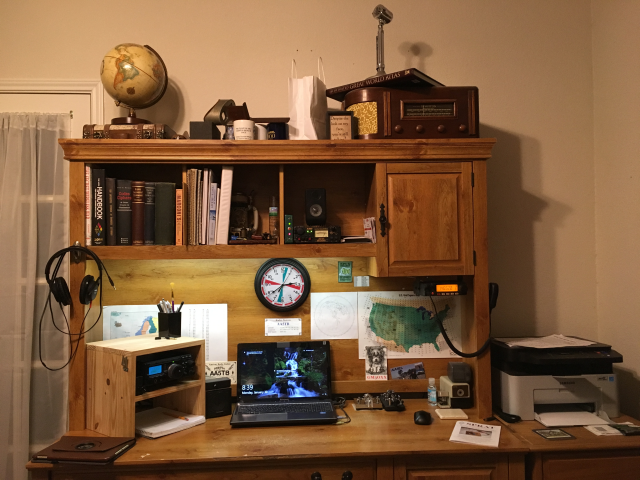
My shack, January 30, 2017.

My shack, January 6, 2010.
I always enjoy seeing the ham shacks of others so I put together this page to show some of my shack photos. Generally, my shack photos are not very impressive since I take a rather minimalist approach to my hamming. My station seems to shrink rather then grow over the years. Also, since I seldom buy new equipment I tend to move my old stuff around a lot to make it feel new. By "minimalist" I mean setting up only what I really need, not "minimally operating". In fact, I'm probably on the air more then most hams, both contesting and "rag chewing".
Below is the latest view of my shack. As you can see it is pretty simple. My main rig is a Yaesu FT-897D with my SW-40+ 40m QRP rig getting almost as much use. The Acer notebook computer is connected to the Yaesu and I log with N3FJP's AC Log and his various contests logs. I also have a straight key (usually my J-38 or Soviet TKF Key) and my Bencher paddles connected at all times. Most of my operation is on CW but occasionally the microphone is used on the VHF/UHF bands.

My shack, January 30, 2017.

My shack, January 6, 2010.
In February of 2008 I purchased a new Yaesu FT-897D. This rig covers 160m through 70cm and I've been using the heck out of it. I opted for the FP-30B Internal A/C Power Supply and a W4RT 300Hz Collins Mechanical Filter to go with it. I usually operate this rig at QRP power levels but it is capable of 100W if necessary. When using it portable I use an external battery that I already had so with the internal power supply it is a very versatile little rig.
I'm not going to give a full review here but I'll just say that I've used my FT-897D in just about major contest since I purchased it with no problems. It is a very good CW rig and I just don't have any complaints. I will say that to get full use out if you really need to know what you are doing. Because it is extensively menu driven I would not consider it a beginner's rig.

I still use my assortment of dedicated QRP gear too. The QRP rig that I use the most is my SW-40+ . This is a great little rig that I use in the shack and in the field. I have a battery that is charged with a small solar panel on my roof so whenever I use this rig I'm operating with solar power. Over the 2009 Thanksgiving Holiday I built and installed a digital dial for it.
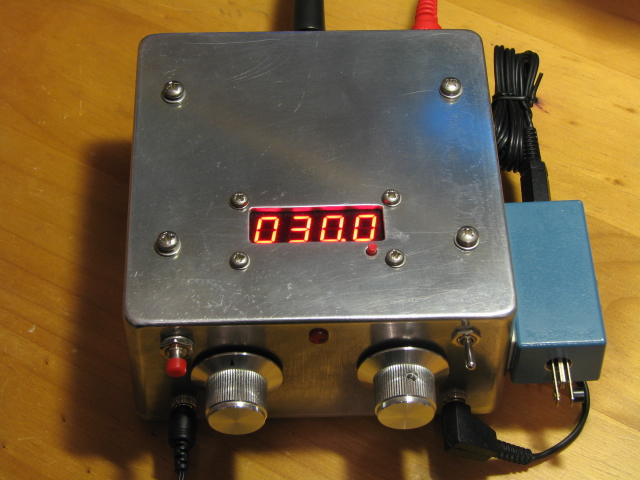
Below is a cabinet that I house my telegraph key collection, QRP rigs, and Accessories in.
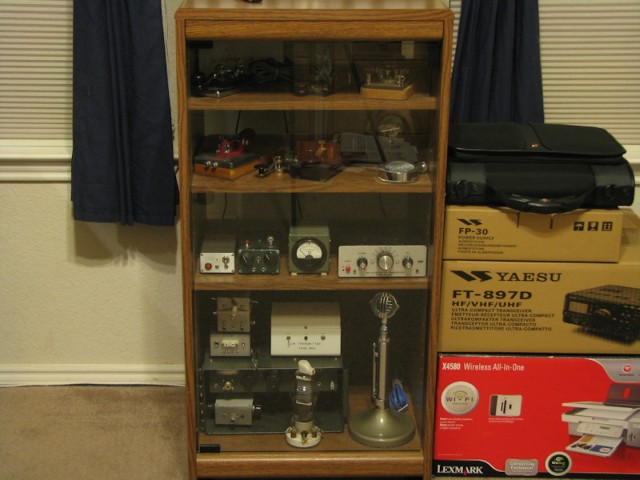
The Hallicrafters S-85 below is what I use for general short wave listening (SWL).
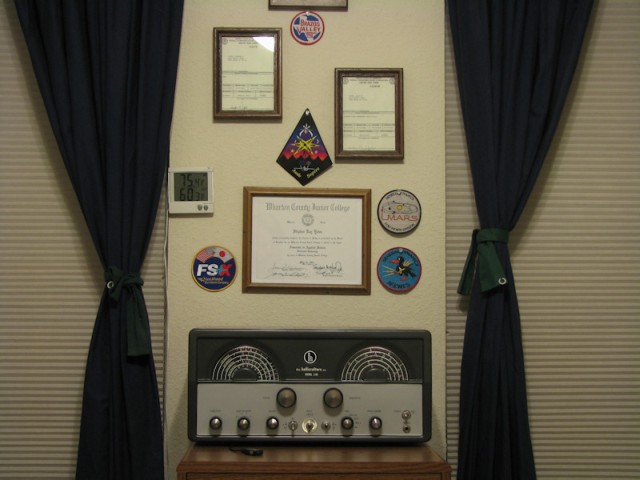
My main HF antenna is not much to look at really. It is configured as an Inverted-L with the vertical section about 6 meters long and a horizontal section about 14 meters long. It is supported at the apex by an eye hook on my chimney and on the other end by a rope, pulley, and bird feeder system tied to a tree. I am feeding it against an 8 foot ground rod with no radials. I am presently feeding it with the coupler shown below for dedicated 40m use. On that band it is an end fed half wave length antenna and the need for radials is minimal. I also get the best performance possible from my HOA infected city lot with this configuration on 40m.

40m EFHW Coupler, January 2, 2010
I usually use the Inverted-L on all bands from 160m through 6m with my SGC SG-237 autotuner installed. A larger number of radials on the ground would certainly improve 160m and 80m performance and on these bands the antenna system it is just a 'leaky resistor'. However, the performance meets my requirements and expectations so that is why it has survived so long. I even have a couple of awards for work on 160m which normally would be unheard of on a city sized lot with QRP power levels. Most of my success with this simple station is due to the use of CW, not necessarily the performance of the antenna. I would still prefer to have many acres for a true antenna farm. However, the lack of a good antenna does not keep from being active on the air and all bands at that!
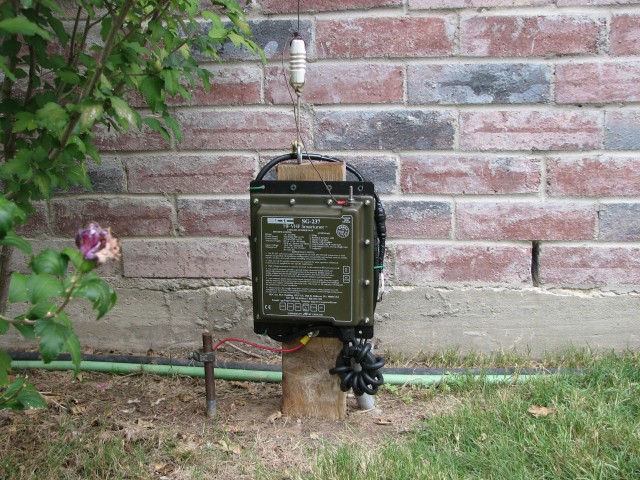
SGC SG-237 Autotuner
I also have a few VHF/UHF antennas in my attic that I have built and they get me by on the higher bands. I love antennas so at any given time I am usually experimenting with some sort of antenna to keep things interesting.